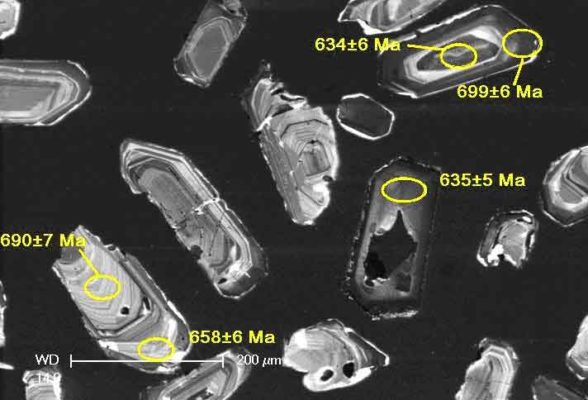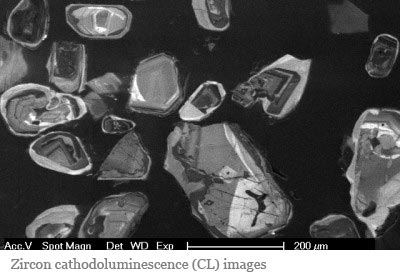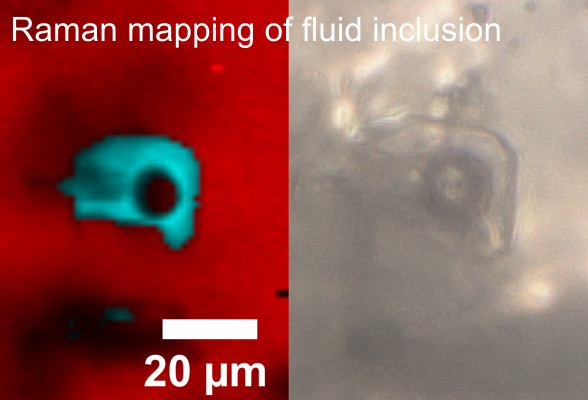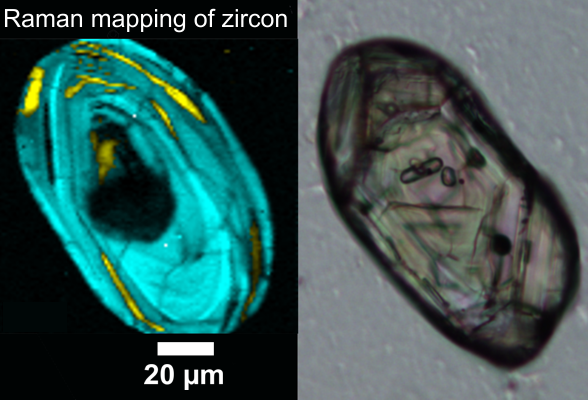Large Geometry Ion Micro Probe Facility
The Large Geometry Ion Microprobe (LGIM) Facility of the John de Laeter Centre, at Curtin University, WA, provides Australian and international scientists in academia, government, and industry access to two high resolution ion microprobes, the CAMECA IMS 1300HR3 and the SHRIMP II. The facility was established in 1992 with the purchase of the first commercially manufactured LGIM, the SHRIMP II ion microprobe, by a WA consortium comprised of Curtin University, the Geological Survey of WA and the University of WA. A second SHRIMP II was purchased in 2003. A CAMECA IMS 1300HR3, funded by NCRIS through AuScope, Curtin University and the WA State Government, was installed in 2022. A WITec alpha300R Confocal Raman Microscope was installed in 2024 with support from Curtin University.
The CAMECA IMS 1300HR3 and SHRIMP II large geometry ion microprobes are mass spectrometers that allow in situ isotopic and trace element microanalysis of complexly zoned minerals in grain mounts and thin section plugs. Inorganic and biological minerals may have age zonation and internally complex isotopic patterns at the micro- to nanometre scale that require high spatial resolution techniques to decipher their formation and subsequent evolution. Ultrahigh-precision isotope ratio analysis at the micrometre scale combined with high resolution textural observation is essential in modern science, as such data can reveal insights into fundamental planetary, geological, or biological processes that created and shaped these materials.
LGIM technical background
The CAMECA IMS 1300HR3 and SHRIMP II are secondary ion mass spectrometers that focus primary ions, mainly positive Cs and negative O-species, that have been accelerated to high velocity, onto a target material. The impact of the primary ions produces secondary ions that are then transported through the mass spectrometer and counted at the collector. By separating and counting isotopes of the same element that have different mass, it is possible to produce isotope ratios, that after correction for instrument bias yield true isotope ratios. The focused primary ions produce a crater that is ~1 to 10’s of micrometres in width, and where chemical and isotopic changes can be traced at sub-micrometre depth resolution. This means that LG-SIMS analysis is minimally destructive, and thus perfect technique for in-situ investigation of solids where sampling needs to be performed at small size, high sensitivity and low detection limits, when ultraprecise, accurate isotope ratios are required. In addition to individual spot analyses, SIMS can produce depth profiles as well as 2D and 3D isotope distribution maps.
LGIM Techniques
Below, we list examples of analyses routinely carried out in the Curtin LGIM Facility. Other applications are presently being developed, and we are open for developing new techniques upon user demand.
CAMECA IMS 1300HR3:
- 18O (Δ17O) baddeleyite, calcite, corundum, dolomite-ankerite series, olivine, spodumene, silicate glasses, zircon
- δ13C calcite, dolomite-ankerite series, graphite
- δ34S anhydride, chalcopyrite, gypsum, pyrite, pentlandite, pyrrhotite
δ7Li zircon
- U-Th-Pb geochronology, including U-Th disequilibrium (e.g., baddeleyite, monazite, rutile, zircon)
- Trace elements (e.g., Ti-in-Zircon geothermometry, REE in zircon)
- Nuclear forensic analysis of particles (e.g., U isotopes)
SHRIMP II:
- U-Th-Pb geochronology (e.g., zircon, monazite, xenotime, titanite, allanite, columbite-tantalite, baddeleyite, rutile, cassiterite, opal, apatite, perovskite, gadolinite, chevkinite, ilmeno-rutile, uraninite and zirconolite)
- Trace elements (e.g., Ti-in-Zircon geothermometry, REE in zircon)
CAMECA IMS 1300HR3
Expanding the legacy of early smaller ion probes by CAMECA, the Curtin LGIM is indispensable in the Earth and planetary sciences because it is unrivalled in providing precise, high-resolution stable isotope data. Application areas for the CAMECA IMS 1300HR3 are listed below.
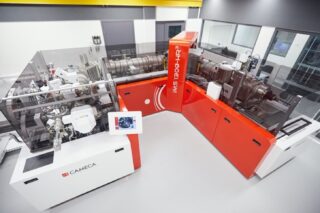
View all current applications
- Earliest Solar System Evolution
Studies of chondrules, Calcium-Aluminium-Inclusions (CAIs), star dust and achondrites using stable isotopes and extinct radiogenic isotope systems, such as Mn-Cr, and Al-Mg to constrain solar nebula events. - Extra-terrestrial Geochemistry
Planet and planetesimal formation and alteration research relies heavily on in situ isotope micro analysis. The age and effects of impacts, thermal history of Lunar samples from NASA and Martian meteorites have been studied. Mn-Cr studies of Fe-rich olivine in meteorites provides time constraints on weathering processes in asteroids. - Sample Return Missions
Oxygen and chromium isotope ratios can identify the parental material and nebular source region of micro grains brought back by sample return missions, such as Hyabusa II. The Curtin instrument is ideal for analysing Martian samples to be brought back to Earth by the Mars Sample Return mission in 2033. - Early Earth Atmosphere
Sulphur isotope non-mass-dependent and mass-dependent isotopic fractionation of isotopes 32, 33, 34, and 36. - Major Biosphere Events
The CAMECA 1300HR3 provides C, O, and S isotope measurements of that can be coupled with SHRIMP geochronological constraints to study the effect of major global geological events on the biosphere, i.e. glacial epochs, major volcanic eruptions, mass extinction events and anthropogenic impacts on the environment. - Biogeochemistry and Paleontology
Carbon, O, and S isotopes allow scientists to identify and study early Earth bacteria, stromatolites, and eukaryotic organisms. Similarly, these isotopes can be applied to the study of higher order life forms, such as forams, algae, vascular plants, molluscs, corals, arthropods, chordates (vertebrate teeth and bones). - Volcanology
Accessory mineral U-Th disequilibria ages allow us to the study the recent eruption history of active volcanoes and assess the eruption hazards of potential super-volcanoes and their geothermal resources. - Ore Deposit formation and evolution
Lithium, C, O, S and Pb isotopes are often used in research into ore localisation, and at high spatial resolution, these isotopes can identify ore sources remobilisation processes. The CAMECA IMS 1300HR3 supports ore deposit exploration by Australian and international mining companies and provides isotopic fingerprinting for assuring sustainable supply chains. - Sedimentology
Constrain the early diagenetic history of sedimentary systems using stable isotopes of datable diagenetic minerals, such as xenotime and apatite. - Metamorphism and Crustal Fluid Flow
Prograde and retrograde metamorphic reactions, P-T-t loops, fault movement and deep crustal fluid circulation can all be tracked and modelled using stable isotopes. - Stable Isotope Technique Development
The effect of mineral chemistry, mineral structure, solids solutions, radiation damage and microstructural changes on stable isotope measurements can be jointly studied using the CAMECA 1300HR3, Raman microscopy, and the Curtin Atom Probe. - Stable Isotope Reference Material Development
Micro-analytical stable isotope measurements requires Reference Materials (RM), and the LGIM Facility at Curtin has a collaborative agreement with CAMECA to characterise RM of minerals for the geochemistry community. - Nuclear Forensics
Isotope imaging and ratio measurements of U enriched particles by CAMECA ion probes is a pivotal method used by the IAEA to provide information relevant to the global Nuclear Non-Proliferation Treaty (NPT) and other treaties assuring nuclear security and safeguarding.
SHRIMP II
The SHRIMP II provides precise, accurate, high spatial resolution, uranium-thorium-lead geochronology of zircon, monazite, xenotime, titanite, allanite, columbite-tantalite, baddeleyite, rutile, cassiterite, opal, apatite, perovskite, gadolinite, chevkinite, ilmeno-rutile, uraninite and zirconolite.

Applications
The SHRIMP ion microprobes revolutionised geology. Just a few of the application areas are listed below.
View all current applications
- Early Earth Evolution
SHRIMP U-Pb ages and Ti-in–zircon thermometry of Jack Hills and Mount Narryer zircon have provided constraints on the crystallisation environment of zircon from the earliest Hadean Earth. The oldest zircon on Earth was measured on the SHRIMP. - Reference Material Development
Micro-analytical geochronology requires Reference Materials (RM), and the LGIM Facility at Curtin is involved with characterisation of RM of accessory minerals for the geochemistry community. - Geologic Time Scale
The SHRIMP provides accurate geochronological constraints on major global geological events, i.e. correlation of glacial epochs, large igneous province volcanism and mass extinctions. - Meteorite Impact Structures
The Curtin SHRIMPs have been used in studies of lunar impact breccia, meteorite impact breccia and micro-spherule beds, providing a bombardment flux history and an understanding of impact processes. - Regional Mapping
The Curtin SHRIMP is essential to the mapping program of the Geological Survey of Western Australia, having provided ages for >1200 samples. - Sedimentology
The Curtin SHRIMP has provided detrital mineral populations statistics and xenotime and monazite ages to constrain the early diagenetic history of sedimentary systems. - Metamorphism and Crustal Fluid Flow
Research on prograde and retrograde metamorphic reactions, P-T-t loops, fault movement and deep crustal fluid circulation all rely heavily on the Curtin SHRIMP. - Geochronology Technique Development
Curtin SHRIMP researchers study the effects of mineral chemistry, mineral structure, solids solutions, radiation damage and microstructural changes on secondary ion yields and SIMS results using the SHRIMP and Curtin Atom Probe. - Paleontology
SHRIMP age data constrains the ages of the earliest mega-fossils and stromatolites. - Ore Deposit Geochronology and Exploration
Research into ore localisation, sources, and remobilisation, as well as ore deposit exploration by Australian and international mining companies relies on the Curtin SHRIMP for geochronology. - Plate Tectonics Reconstruction and Crustal Evolution
Accurate SHRIMP age data on intrusive dikes swarms, gigantic flood basalt provinces and granite intrusion is essential for plate tectonic models of super continent formation and subduction related fold belts. - Extra-terrestrial Geochronology and Geochemistry
The age and effects of impacts, thermal history of Lunar samples from NASA and Martian meteorites have been studied on our SHRIMP. The oldest zircons of the Moon and Mars were dated in the SHRIMP Facility. - Igneous Petrology-Volcanology
SHRIMP U-Th disequilibria and trace element data allows us to the study the evolution of a magma chamber in young (younger than 1 Ma) volcanics.
Raman Microscopy and Sample Prep Laboratories
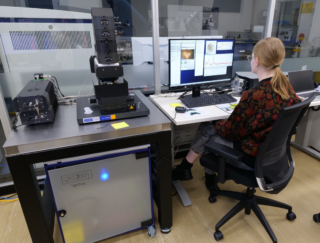
A WITec alpha300R Confocal Raman Microscope for two excitation lasers with wavelengths of 532 and 785 nm was installed in the LGIM Facility in May 2024. Raman microscopy uses inelastic photon scattering to identify characteristic molecular vibrations in matter. Excitation of electrons by intense laser beams creates bond-specific emissions that can be spectrally resolved in the scattered light. Laser beam interaction with the target material is non-destructive and spatially selective at micrometre lateral resolution, depending on excitation wavelength and numerical aperture of the microscope objective. Three-dimensional mapping is possible in transparent materials at sub-μm depth resolution in confocal illumination. Available objectives are 10× (numerical aperture NA 0.95, working distance WD 9.3 mm), 40× (NA 0.6; WD 3.6 mm), 50× (bright-/darkfield NA 0.8; WD 0.6 mm), and 100× (NA 0.9; WD 1.0 mm). Raman microscopy requires minimal sample preparation, with no need for coating, polishing, or vacuum-stable mounting.

Our sample preparation laboratories feature fume hoods, vacuum ovens, Au/C/Al coating, an optical and reflected light microscope with a digital camera, a micro diamond saw, ultrasonic baths and sample polishing equipment.
Raman Current Applications
The Raman microscopy capability enhances the isotopic and compositional analytical capability of LG-SIMS by providing fine-scale structural analysis of materials. Rapid, non-destructive, and spatially selective Raman analyses are applied to research questions in the Earth and planetary sciences, and other disciplines concerned with material structural properties.
View all applications
- Quantifying radiation damage in minerals
- Analysis of volatile components and organic materials
- In-situ characterization of solid, liquid, and gaseous inclusion phases in ore minerals
- Localized structural analysis of amorphous materials
- Polymorph mapping
- Kinetics of phase changes and reactions
- Rapid particle identification
Featured projects
Standards Development
Representative publications:
- Zircon M257 – a Homogeneous Natural Reference Material for the Ion Microprobe U-Pb Analysis of Zircon.
- Grenville skarn titanite: potential reference material for SIMS U–Th–Pb analysis.
- Eocene zircon reference material for microanalysis of U-Th-Pb isotopes and trace elements.
Metamorphism and Crustal Fluid Flow
Representative publications:
- How long-lived is ultrahigh temperature (UHT) metamorphism? Constraints from zircon and monazite geochronology in the Eastern Ghats orogenic belt, India.
- High-resolution geochemical record of fluid–rock interaction in a mid-crustal shear zone: a comparative study of major element and oxygen isotope transport in garnet.
- Deformed monazite yields high-temperature tectonic ages.
Plate Tectonics Reconstruction
Representative publications:
- Age and paleomagnetism of the 1210 Ma Gnowangerup–Fraser dyke swarm, Western Australia, and implications for late Mesoproterozoic paleogeography.
- Closure of the Clymene Ocean and formation of West Gondwana in the Cambrian: Evidence from the Sierras Australes of the southernmost Rio de la Plata craton, Argentina.
- Grenvillian continental collision in south China: New SHRIMP U-Pb zircon results and implications for the configuration of Rodinia.
- SHRIMP U–Pb zircon ages for the Palaeoproterozoic Kuruman Iron Formation, Northern Cape Province, South Africa: evidence for simultaneous BIF deposition on Kaapvaal and Pilbara Cratons.

